Michael Aitken is a painter currently living in Queens and working in Brooklyn. He graduated from the Rhode Island School of Design for Painting in 2010. His studio building is a block from the East River where the skyline of Manhattan runs undisrupted. Located in the basement, Mike’s “cave-like” studio is dark and secluded, a drastic change from above ground. A casino like room with no inkling of daylight, time seems to be nonexistent. We met up with Mike to talk about his paintings and how his studio plays a subconscious role in his work.
F: Can you talk about the use of a gridded system in your work? It seems to come in and out of your work from time to time.
MA: I was using gridded spaces a few years ago and decided recently to revisit them. I think I’m attracted to them because of the way they point to flatness and image production, or image duplication. Sometimes I like to think of my paintings as imagery that’s been run through a human scanner. I appropriate images and make them mine by wedging them into… or laying bits and pieces of them over or under sectioned off units of flat space. But I mean most of the time, my process is pretty lazily intuitive to begin with and gridding the surface of a white canvas is a way to introduce order and cut back on the fog a little bit.
F: How long do you work on a piece for? Do you revisit it? Is it a process of familiarizing yourself with the canvas?
MA: I guess it varies from painting to painting, but generally I’ll work on a piece for a very long time. Sometimes I’ll come back to it for months. , a former painting teacher of mine, once told me that unless a piece goes through an awkward, ugly teenage phase and comes out the other side, it will forever seem developmentally retarded. I think about that a lot in the studio.
As far as familiarizing myself with the canvas, I think that’s a lot to do with it, but the canvasses in my studio also are in an ongoing process of familiarizing themselves with each other. I’ll work on several pieces at a time, so they all kind of grow up together. When I was in Minneapolis I saw a show at the that had curated where he pulled a bunch of pieces from the permanent collection in storage and arranged them to see how they would get along as “roommates”. I think it was called . In a way that’s how I see my process. As the paintings grow, some of them become friends and inform each other’s development, and some of them don’t really show their true colors or blossom unless a particular other one is out of sight. There are a lot of late bloomers in that bunch.
F: I like that analogy. You also use printmaking as a way of working as well as painting. How do these two different modes of making, inform each other?
MA: It’s difficult for me to make straight lines without tools, so I can appreciate any tool that allows me to quickly reproduce measured, straight-edged lines. My only issue with it now is lack of facilities. I have this one little hobby press that allows for like a 9″ x 12″ plate. It’s annoying to think back and count the hours you wasted during undergrad not taking advantage of on-campus facilities that were just lying around while you were at your apartment or some other god forsaken place.
F: How do you determine the subject matter in your paintings (your references to Matisse, digital rgb color screens, car windows, roads and maps and etc.)?
MA: Well, again, a lot of the paintings are begun intuitively. I’d say by about one third of the way in, I’ll make a move that decides the direction of the piece, and from there I’ll pull in imagery from different sources, often other paintings in the room or things I’ve been looking at that week. A few weeks ago I went to the Met to see a show and spent hours staring at View of Notre Dame. I’ve been thinking about that painting a lot since. It’s made it into a couple of recent paintings.
I think you were the one who picked out the windows of public transportation in some of my work. I hadn’t thought about it before you brought it up but now it’s clear. Besides being a long-standing trope in the tradition of easel painting, I think working windows into my paintings is largely a result of working in a windowless basement space.
F: The size of your canvases is rather intimate (small square canvases). Can you talk a little about how you approach the paintings at this scale. Do they become easier to see as objects at a smaller scale?
MA: They do. And I’m fairly comfortable working at this scale — plus, I bought stretchers in bulk in the 18”-24” ballpark, so I’ve been working through those for a while now. There’s something valuable about working on a series of paintings that are all the same size and shape, too. It’s like stripping down to a limited palette. When you reduce variables it’s easier to work through ideas without letting decisions about scale add unnecessarily to the complexity. That said, my next move is to make some
larger paintings.
F: Can you talk about the surface quality of the paint? A lot of the painting seems to be about taking away as much as adding. How do you walk the fine line in between the two (addition and taking away) even to the extent of the image being taken away vs retained?
MA: That goes back to Congdon’s advice about developmental retardation. Often a painting will arrive at a stage where I’ve constructed an image that I mostly really like but that falls apart for whatever reason, and it becomes clear that in order to maintain the integrity of the whole that image has to go, or at least partially be scraped down or addressed with “white out”. Regarding how that relates to surface quality of the finished piece, I think it’s sometimes important that in the final stage there’s evidence of having gone that maturing process.
F:Seeing your work and the labored process that each painting has, when do you feel you have finished a painting?
MA: Since I work on several paintings at a time, it’s often hard to tell when something is finished. I might consider something finished until I discover something in another painting that makes me change my mind about the first one. Sometimes when two pieces really don’t get along I’ll turn one around to face the wall and work on the other until it becomes unrecognizable. Then I’ll turn the painting around again and see where we are. I guess what I’m saying is that a painting’s level of completion might always be relative and unattainable, it’s just a matter of being okay with this or that stage given the context. Sorry this just got really Chicken Soup.
F: How do you like working in the basement? Are there any differences between working in a space with daylight? Do you think it’s changed your work?
MA: It probably has, but I’m not sure which changes I can attribute to working in a cave. The price is right, and there’s something to be said for not knowing when the sun is going down and kind of plowing through a timeless space, but it can’t be very healthy. I remember once when Tatiana Berg came to visit the studio, she noted that several of us down here have similar window themes and hopeful little moments of bright color going on. I think we’re all sort of desperate for sunlight but at a little over a dollar per square foot it’s hard to beat.
You can find more of Michael Aitken’s work at .

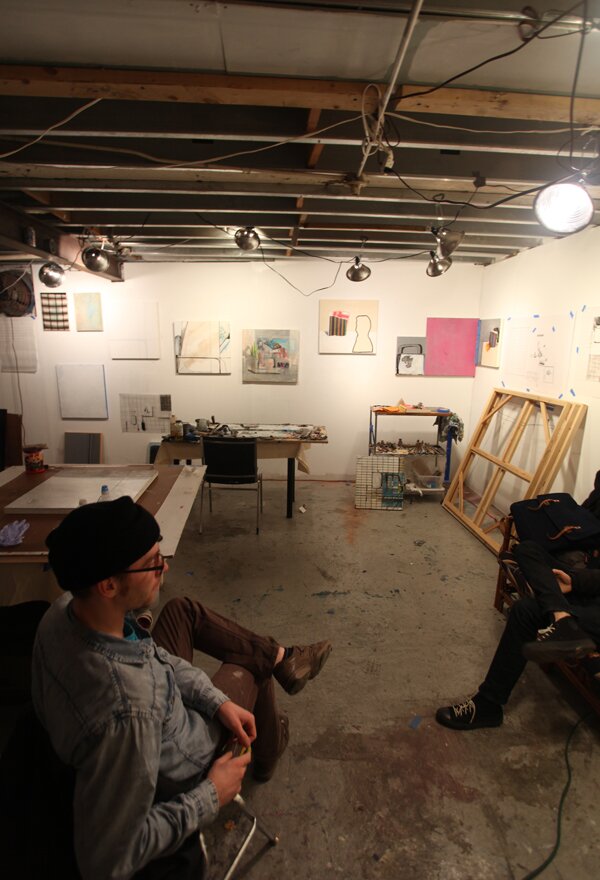
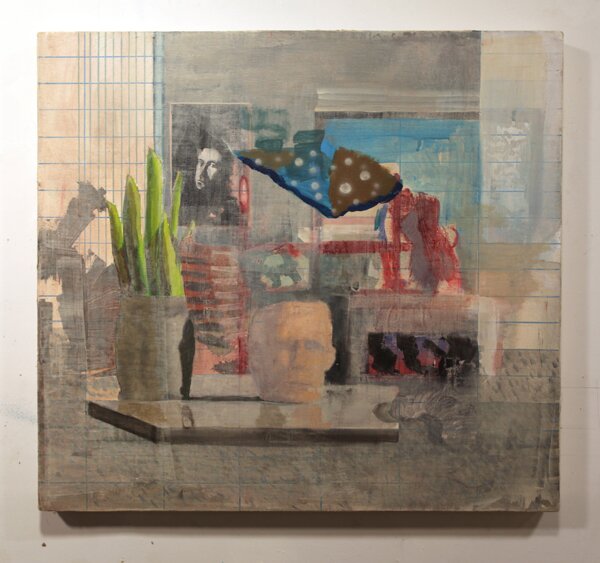
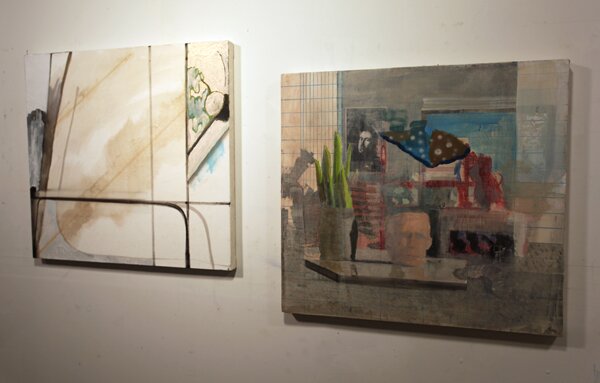
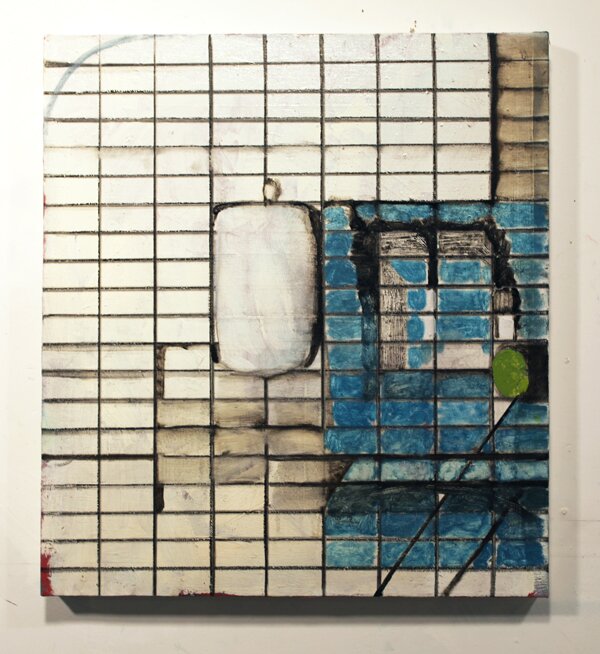
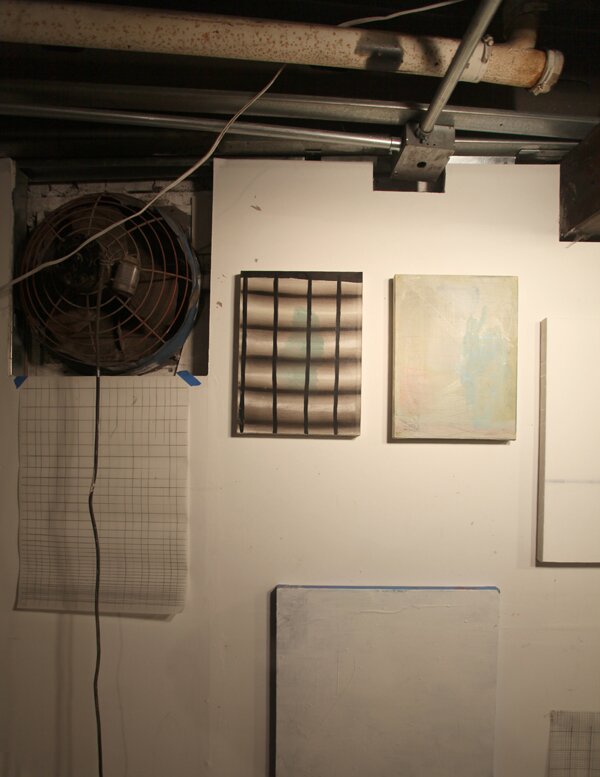
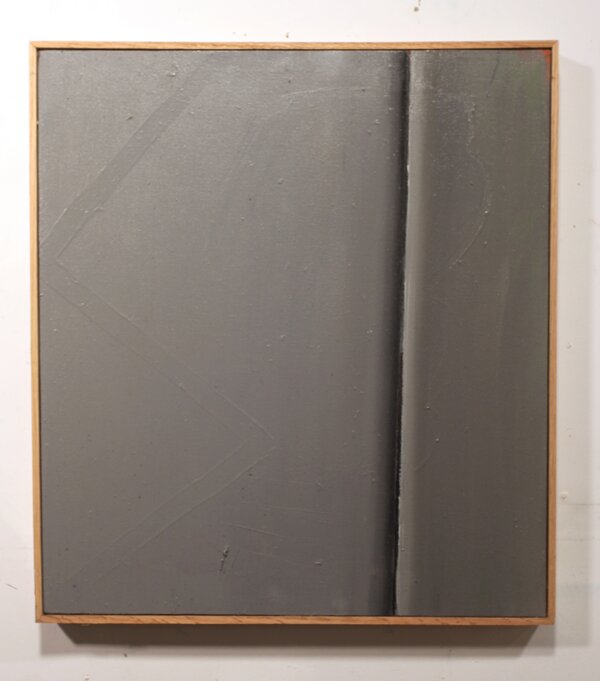

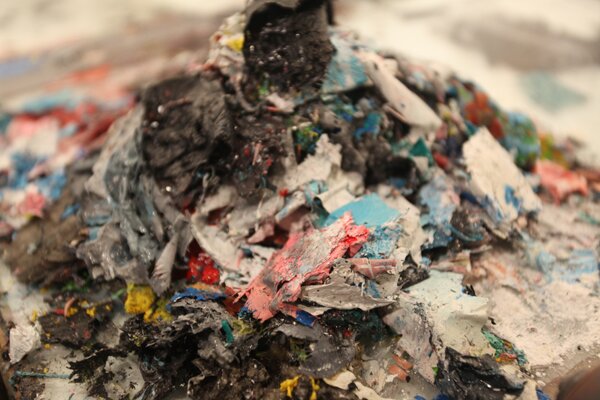
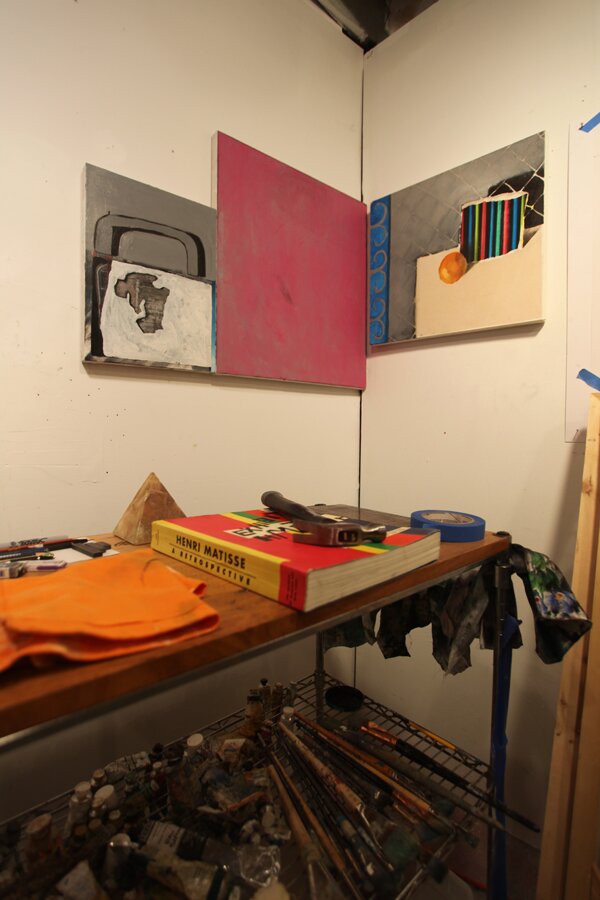
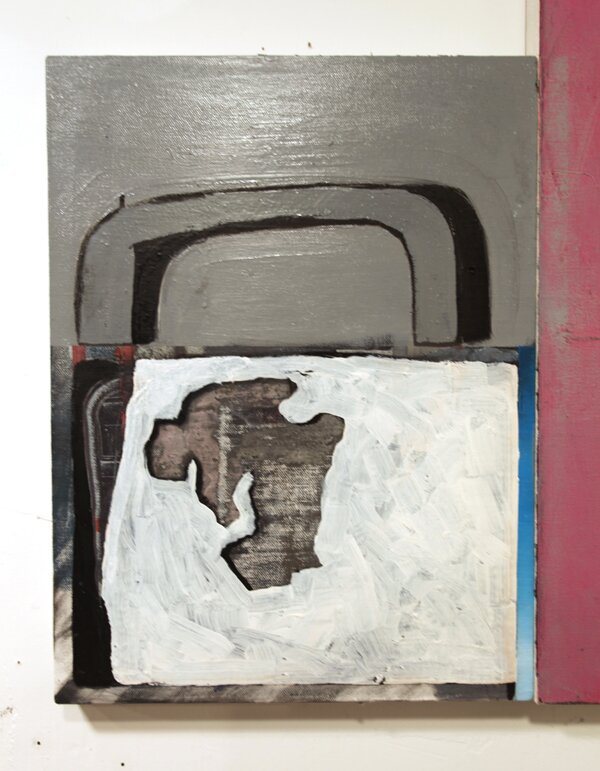
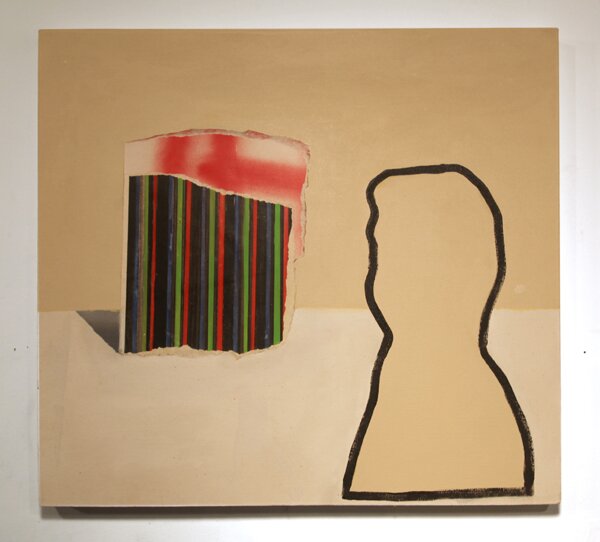


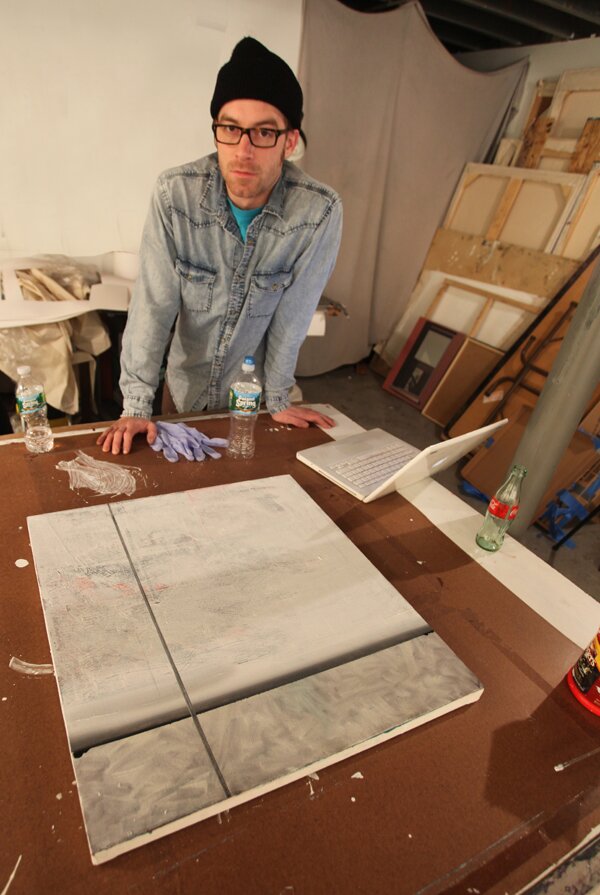




Pingback: